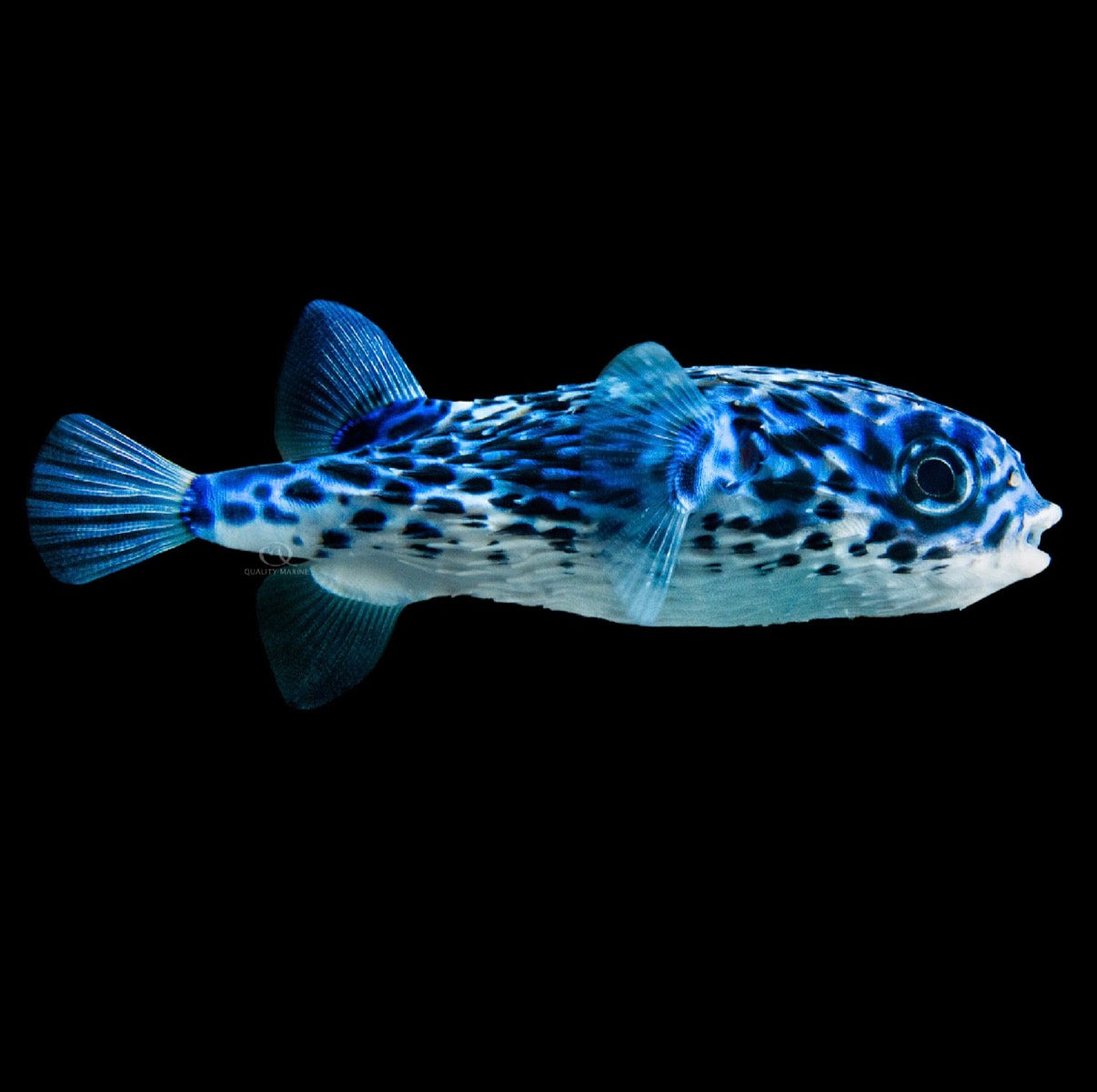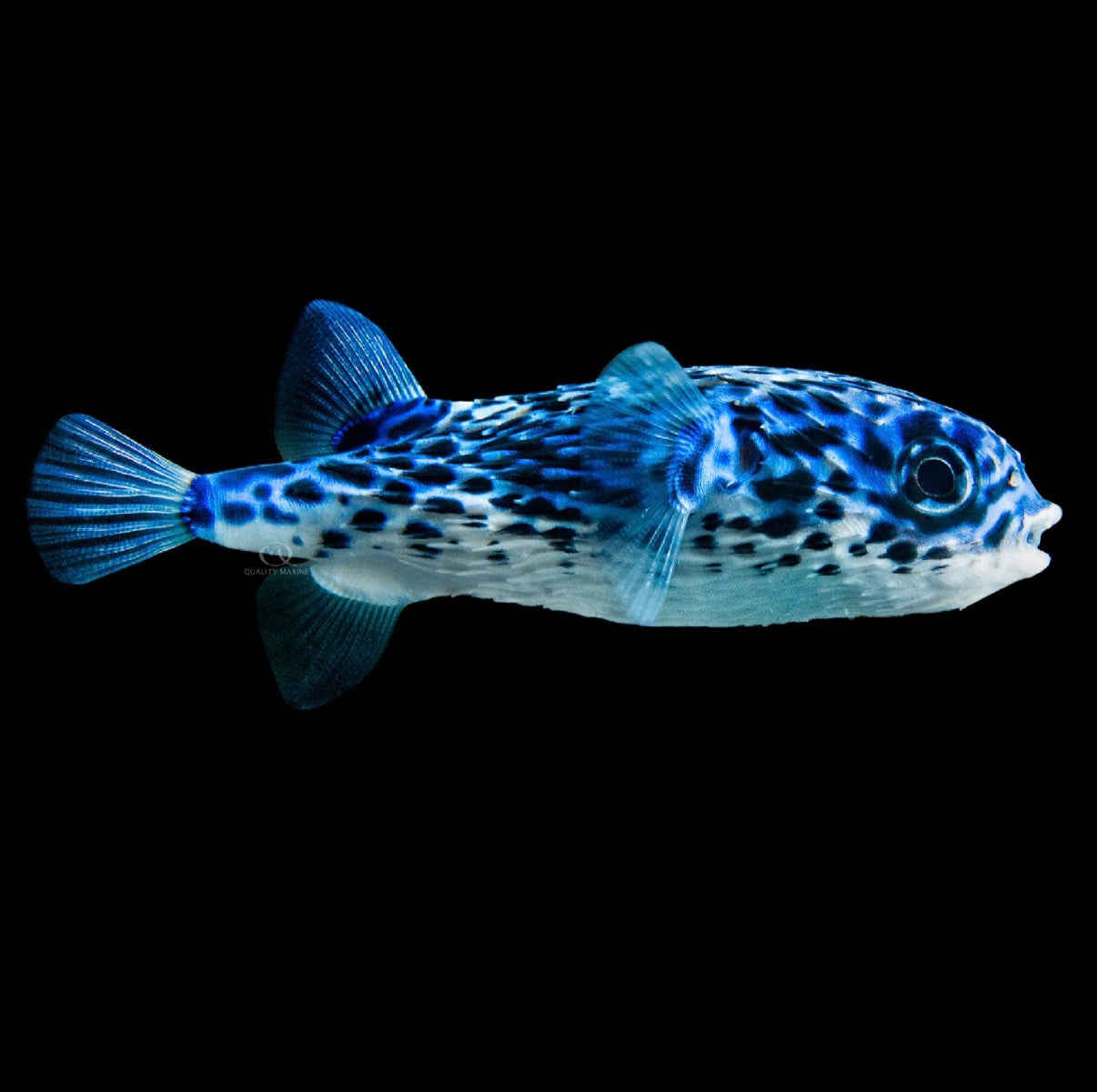1
/
ng
1
Blue Pelagic Porcupine Puffer (Diodon eydouxii)
Blue Pelagic Porcupine Puffer (Diodon eydouxii)
Out of stock
Regular na presyo
$799.00
Regular na presyo
$1,199.00
Presyo ng pagbebenta
$799.00
Ang pagpapadala ay kinakalkula sa pag-checkout.
Dami
Hindi ma-load ang availability ng pickup
The Blue Pelagic Porcupine (Diodon eydouxii) is uniques and rare species of porcupine puffer which swim most of its life in the open ocean, unlike most of its reef-dwelling relatives. It is found in tropical and subtropical waters worldwide and is known for its steely blue coloration and ability to inflate its body when threatened.
- Coloration: The fish has a distinct blue or steely-gray back and sides, often covered with small dark spots. Its underside is silvery or white, and a dark blue bar typically runs from the eye down the side of the head.
- Size: The Blue Pelagic Porcupine is smaller than other porcupinefish species, reaching a maximum length of about 27–30 cm (10–11 inches).
- Spines: Like all porcupinefish, it has long, erectable spines across its body. When it inflates, these spines stick out to deter predators.
- Adaptations: Its more streamlined body, smaller size, and curved fins are adaptations for its life in the open ocean.
- Teeth: It has a powerful, parrot-like beak formed from fused teeth, which it uses to crush its prey.
- Habitat: This species is unusual among porcupinefish because it is pelagic (open-ocean dwelling) throughout all stages of its life cycle. It is often found swimming near the surface.
- Depth: It typically inhabits depths between 0 and 140 meters.
- Geographic range: Its distribution is circumtropical, meaning it is found in warm ocean waters across the Atlantic, Pacific, and Indian oceans.
- Behavior: The Blue Pelagic Porcupine is a schooling fish, a behavior that distinguishes it from many other porcupinefish, which are more solitary. It is known to be an active swimmer.
- Feeding: It feeds on pelagic crustaceans, fish larvae, and zooplankton. Its diet of softer-bodied prey is different from the hard-shelled invertebrates that bottom-dwelling porcupinefish typically eat.
- Intelligence: Like other porcupinefish, it is considered a relatively intelligent fish.
Mamili ngayon, magbayad mamaya gamit ang 4 na installment na walang interes sa AfterPay
No reviews
Ibahagi
No reviews


